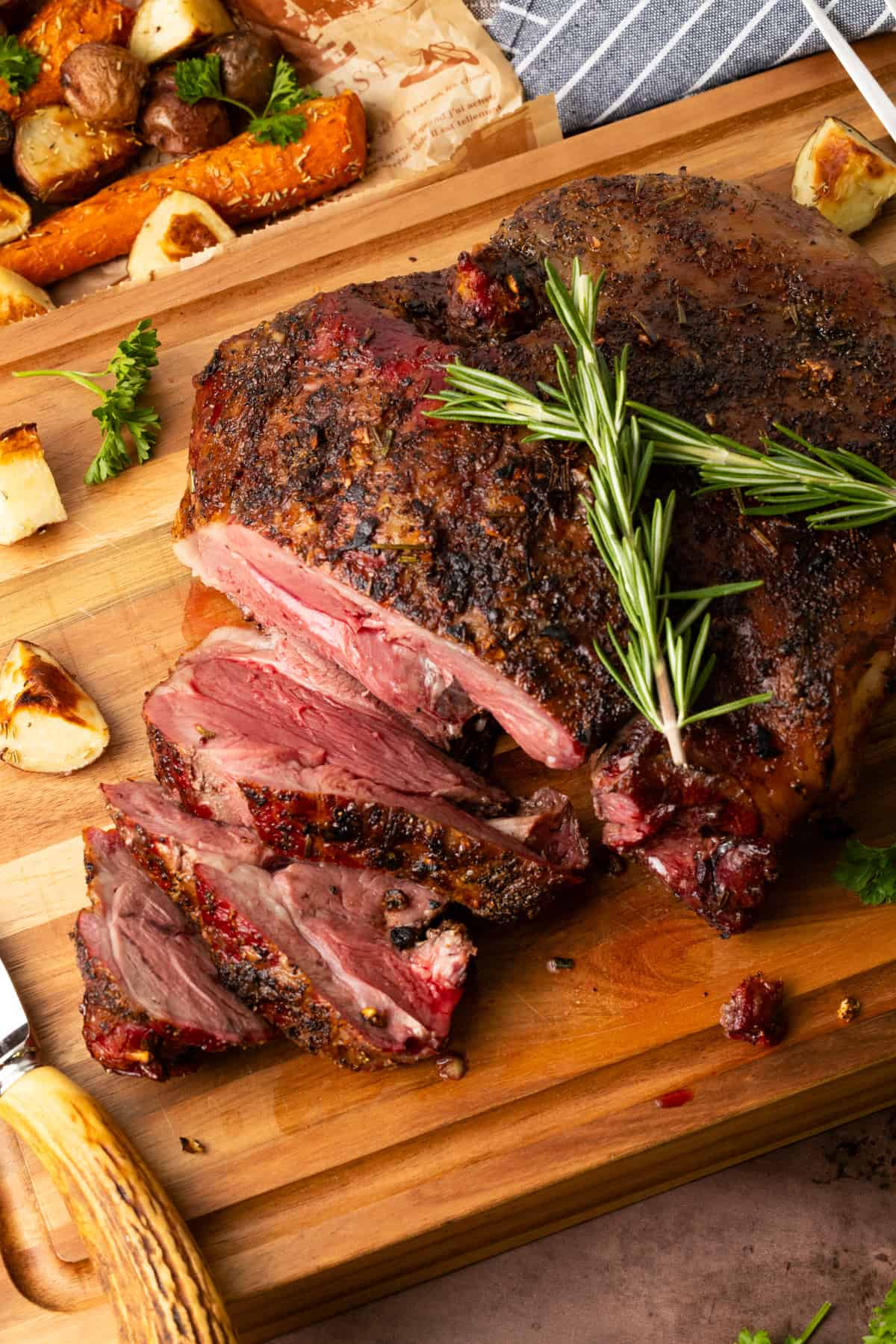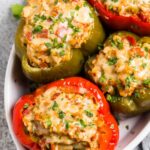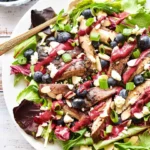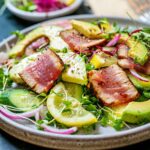If you’re looking to elevate your outdoor cooking game, exploring smoker recipes is a fantastic way to start. Smoking infuses your food with rich, complex flavors that can’t be achieved through regular grilling or oven cooking. By mastering a variety of smoker recipes, you can impress your family and friends with dishes that are both delicious and memorable.
From tender meats to smoky vegetables, there’s a wide array of options to suit any taste. You’ll discover how different types of wood and marinades can enhance the natural flavors of your ingredients. Whether you’re new to smoking or an experienced cook, these recipes will provide you with new ideas and techniques to try.
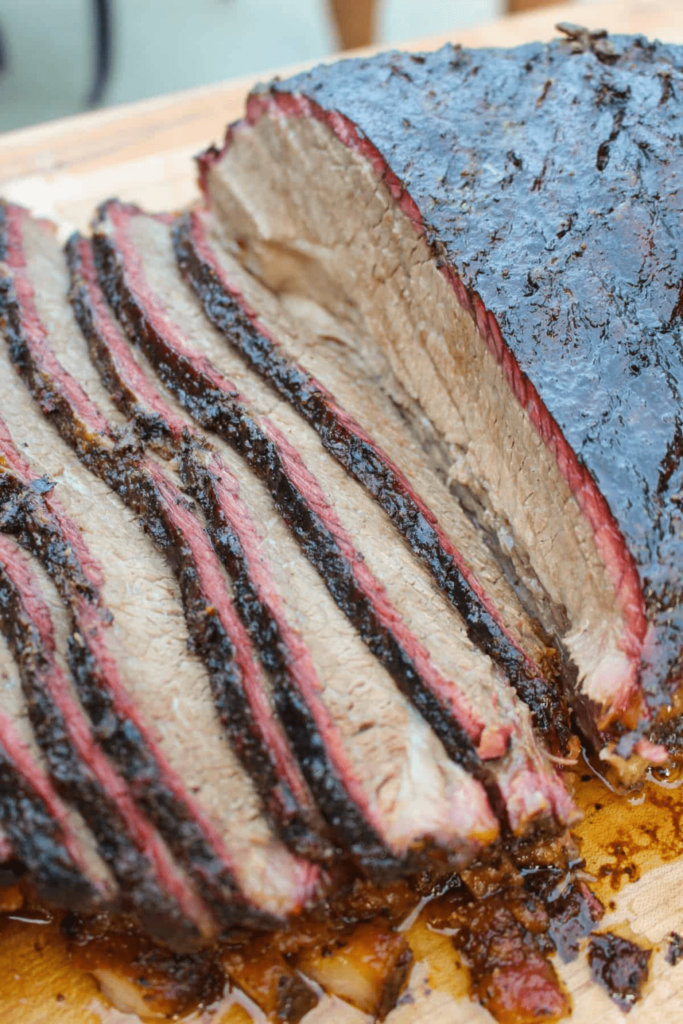
1) Smoked Brisket
Begin by removing your brisket from the fridge. Trim the fat, leaving about a quarter inch of fat for flavor. Be careful not to over-trim where the point and flat come together.
Next, preheat your smoker to 225 degrees Fahrenheit. Use indirect heat to ensure slow and even cooking. Add your preferred wood chips or pellets for smoke.
Place the brisket in the smoker with the fat side facing up. Insert a meat thermometer into the thickest part of the brisket. Close the lid and let it smoke.
Smoke the brisket until its internal temperature reaches 165 degrees Fahrenheit. This usually takes around six to eight hours. You will notice a dark bark forming on the surface.
Once the internal temperature hits 165 degrees, remove the brisket from the smoker. Wrap it tightly in butcher paper or aluminum foil to keep the moisture in.
Return the wrapped brisket to the smoker. Continue cooking until the internal temperature reaches 200 degrees Fahrenheit. This may take another four to six hours.
When done, let the brisket rest for at least 30 minutes before slicing. This helps keep the juices in. Slice against the grain and enjoy your perfectly smoked brisket!
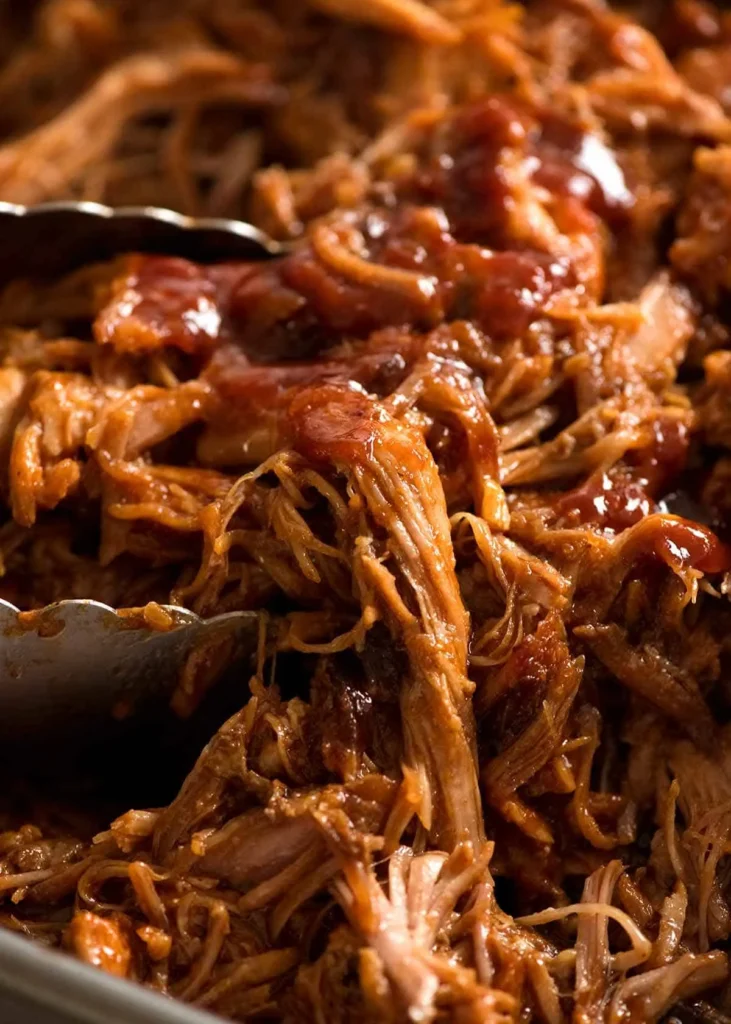
2) Pulled Pork
Pulled pork is a classic dish that is perfect for smoking. You start with a pork shoulder or pork butt. This cut of meat is known for its rich flavor and tenderness when cooked slowly.
Set your smoker to 225°F to 250°F. Rub the pork with your favorite dry rub, making sure to cover all sides. Let the meat sit for about 30 to 60 minutes to absorb the flavors.
Once the smoker is ready, place the pork shoulder on the grate. Smoke the pork until it reaches an internal temperature of at least 195°F. This can take anywhere from 8 to 20 hours depending on the size of the meat and consistency of heat.
Some people prefer to wrap the pork in butcher paper or foil when it hits an internal temperature of 160°F. This helps retain moisture and speeds up the cooking process. Continue to cook until the internal temperature reaches 200°F.
After smoking, let the pork rest for 15 to 30 minutes. This allows the juices to redistribute throughout the meat.
Once rested, shred the pork using forks or meat claws. Serve with your favorite BBQ sauce and buns. Enjoy your homemade pulled pork with some coleslaw and pickles for a complete meal.
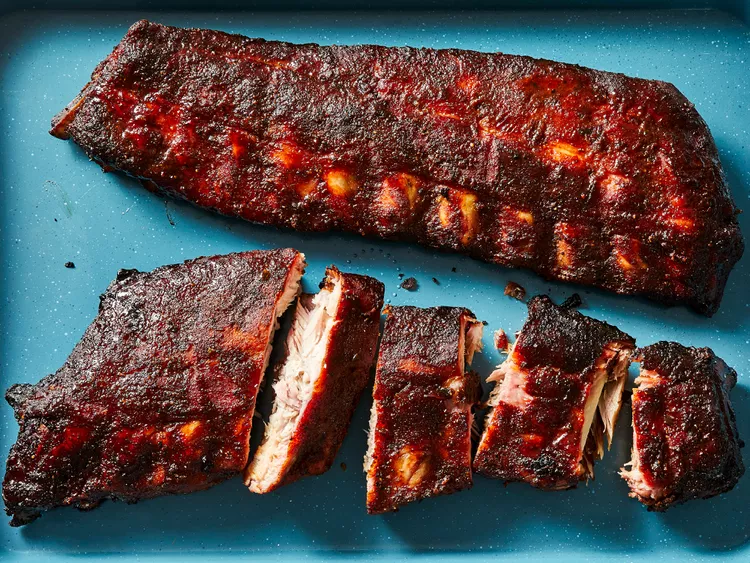
3) Applewood Smoked Ribs
Applewood Smoked Ribs are a delightful treat for any barbecue lover. To start, marinate the ribs in a mixture of spices of your choice. Let them soak in the flavors for about 2 hours, turning them halfway through.
Preheat your smoker to 225°F (107°C) and add applewood chips for a sweet, smoky flavor. Place the ribs on the smoker grates with the bone side down. This helps the smoke penetrate more evenly.
Smoke the ribs for about 3 hours, keeping the temperature steady. During this time, you can baste the ribs every hour with your favorite mop sauce. This keeps the ribs moist and adds extra flavor.
After smoking, you can wrap the ribs in heavy-duty aluminum foil. This step ensures they remain juicy. Cook for another 1 hour. Once done, they should be tender and flavorful.
Remove the foil and let them cool for a few minutes before serving. The applewood smoke gives a subtle and pleasant taste that pairs well with the natural flavor of the pork. Enjoy your Applewood Smoked Ribs with your favorite sides.
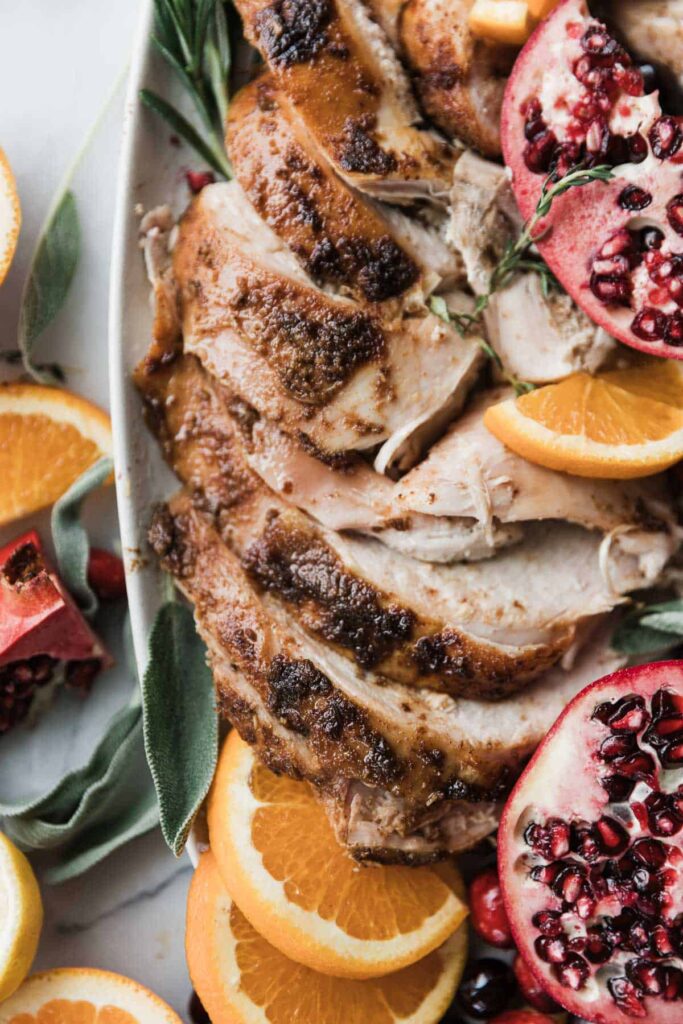
4) Smoked Turkey Breast
Smoked turkey breast is a flavorful dish perfect for any gathering. Start by preparing a brine to keep the turkey moist. Combine water, salt, brown sugar, molasses, garlic salt, onion powder, pepper, and sage in a pot. Bring it to a simmer, then cool it completely with ice.
Submerge the turkey breast in this brine for 8-12 hours. After brining, pat the turkey dry with paper towels. This step ensures the skin can crisp up when smoking. Next, season the turkey with your favorite rub. A sweet rub or a smoked turkey rub works well.
Set your smoker to 275°F. Place the turkey breast directly on the grill grates. It’s important to use a meat thermometer to monitor the internal temperature. Smoke the turkey breast until it reaches 110°F. Then, increase the smoker’s temperature to 375°F.
Continue cooking the turkey breast until the internal temperature reaches 165°F. This ensures the meat is cooked through and safe to eat. Let the turkey rest for a few minutes before slicing. Smoked turkey breast pairs well with various sides, making it a versatile dish for meals.
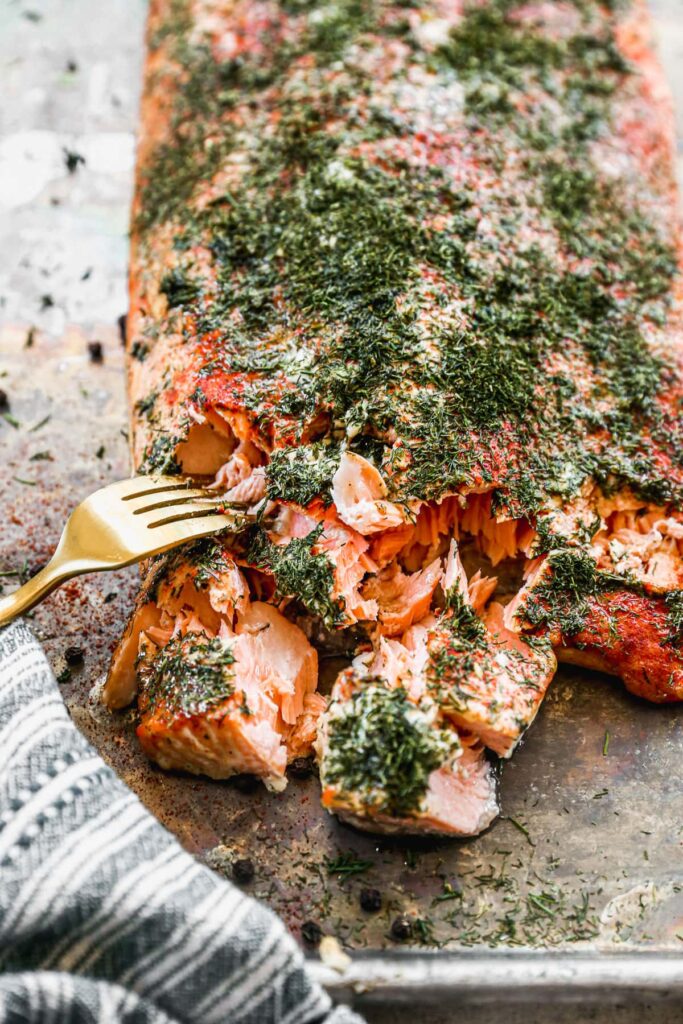
5) Smoked Salmon
Smoked salmon is a delicacy that you can easily prepare at home. Start by preheating your smoker to 225°F (107°C). Preparing the salmon well is key. Rinse and dry your salmon fillets thoroughly.
Use a wet brine to enhance the flavor. Combine water, kosher salt, pepper, and brown sugar. Make sure it covers the fillets completely. Let the salmon brine for at least 4 hours in the refrigerator.
Once brined, season the fillets with salt and black pepper, or your favorite rub. Some prefer Traeger Fin and Feather rub for a unique taste.
To add an extra layer of flavor, baste the fillets with maple syrup, honey, or birch syrup every hour while smoking. This helps keep the salmon moist and enhances its sweetness.
Smoke the salmon until the internal temperature reaches 140°F (60°C). This usually takes about 1 to 1.5 hours, depending on the thickness of the fillets. The result is a rich, smoky flavor that pairs well with a variety of dishes.
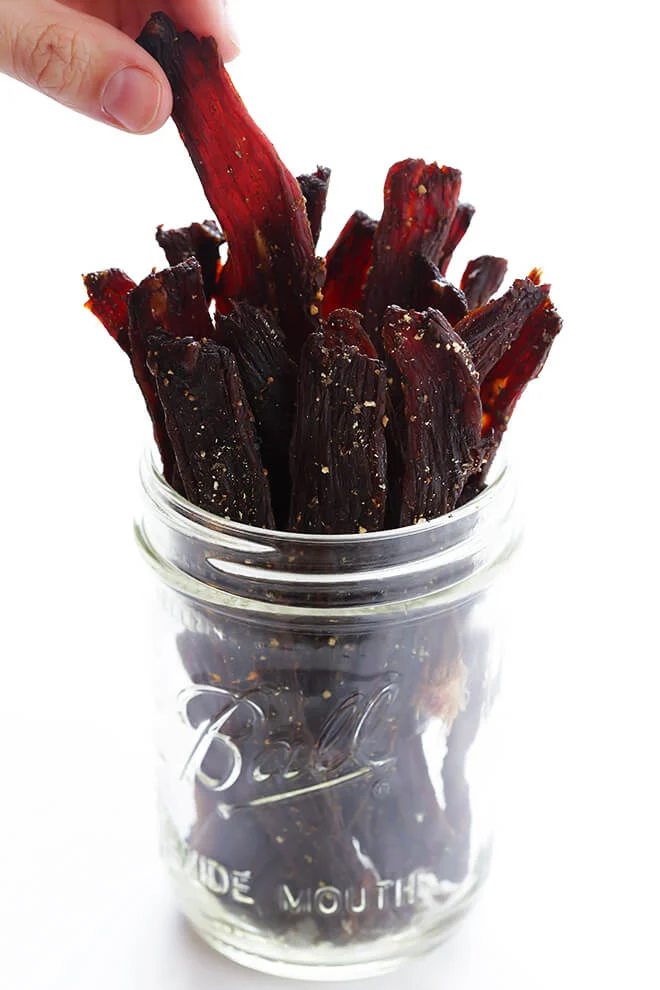
6) Beef Jerky
Beef jerky is a classic smoker recipe that offers a savory snack packed with flavor.
Begin by selecting a lean cut of beef such as flank steak or sirloin. Slice the meat thinly, ideally 1/4-inch thick. Freezing the meat for a short time can make slicing easier.
Prepare a marinade using ingredients like soy sauce, Worcestershire sauce, brown sugar, and pepper. Place your meat slices into the marinade and ensure all pieces are well-coated. Refrigerate the marinated meat for at least 8 hours, but no more than 24 hours.
When ready, remove the meat from the marinade and pat it dry using paper towels. Preheat your smoker to 180°F. Arrange the meat strips in a single layer on the smoker racks, making sure they do not overlap.
Smoke the beef strips for 2-3 hours, flipping them halfway through. The jerky should be firm and dry but still flexible. Once finished, let the jerky cool slightly before sealing it in a ziplock bag to retain moisture.
Enjoy your homemade beef jerky as a delightful treat or a handy snack on the go.
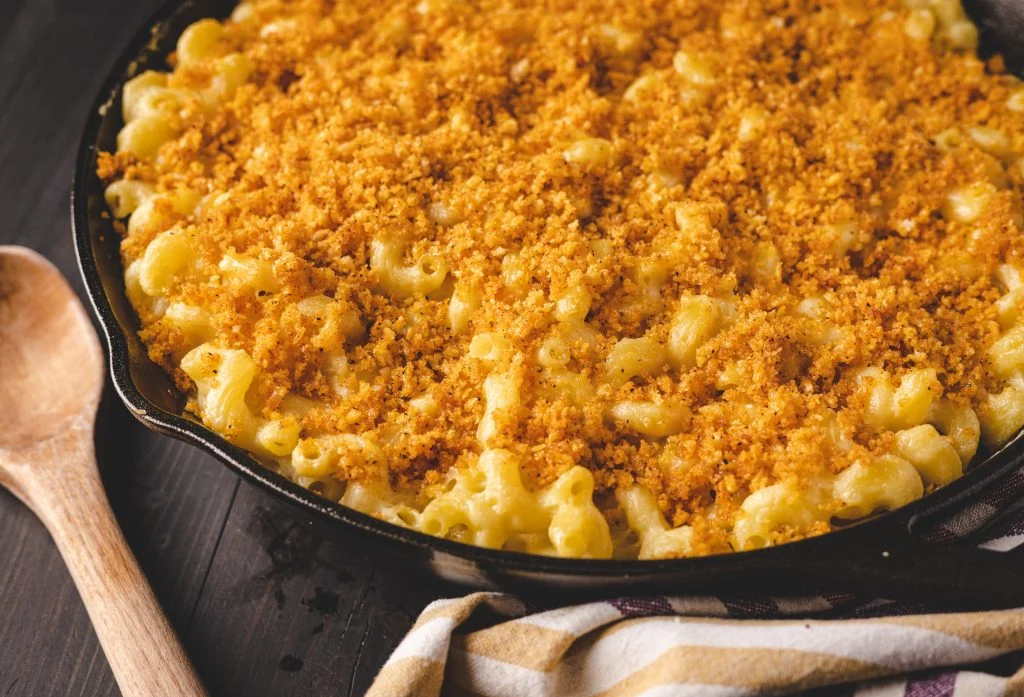
7) Smoked Mac and Cheese
Smoked Mac and Cheese is a delicious twist on the classic comfort food. It combines creamy cheese with a smoky flavor that you get from cooking it on a smoker.
Start by cooking your macaroni noodles according to the package directions. While the noodles are cooking, make your cheese sauce. Melt butter in a skillet and stir in some flour to make a roux. Slowly add milk and whisk until smooth.
Once the sauce is thickened, add grated cheddar and gouda cheese. Stir continuously until the cheese is melted and smooth. Add the cooked macaroni noodles to the cheese sauce and mix well.
Transfer the mac and cheese to a cast iron skillet or aluminum pan. Prepare your smoker at 225°F. Place the skillet on the smoker and close the lid. Smoke for about 1 hour.
For extra flavor, you can add a crumb topping. Mix melted butter, panko bread crumbs, and your favorite BBQ rub. Sprinkle this mixture over the top before smoking.
This smoked mac and cheese makes a great side dish for any BBQ. The smoky flavor works well with the creamy, cheesy pasta. Serve it hot and enjoy the unique taste.
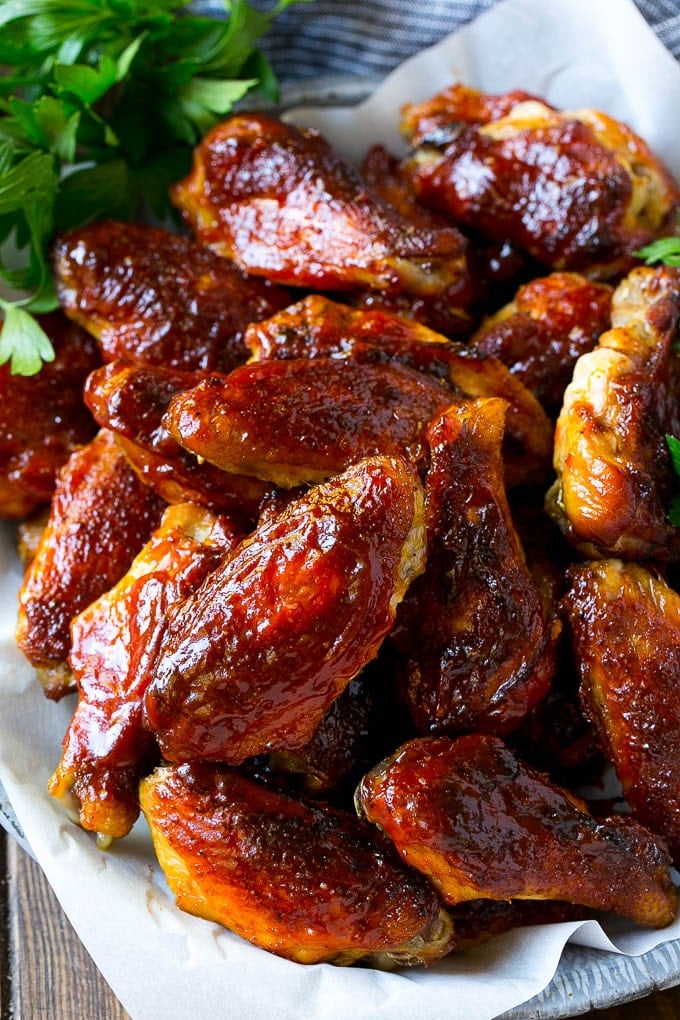
8) Smoked Chicken Wings
Smoked chicken wings are a delicious treat that brings out deep, rich flavors. To start, you need to prepare your wings by seasoning them well. You can use a variety of dry rubs or marinades, letting them sit for at least an hour to soak in the flavors.
Preheat your smoker to around 225°F. Place the wings directly on the smoker grates to ensure they cook evenly. Smoke them for about 30 minutes at this lower temperature.
Next, increase the heat to around 350°F to make the wings crispy. Cook for another 45 minutes to an hour until the internal temperature of the wings reaches 175°F. You can flip them occasionally to avoid any hot spots and ensure even cooking.
Once the wings are done, you can toss them in your favorite sauce or enjoy them plain. Serve them hot and enjoy the smoky flavor with a delightful crispy exterior. Smoked chicken wings are perfect for any gathering or family meal.
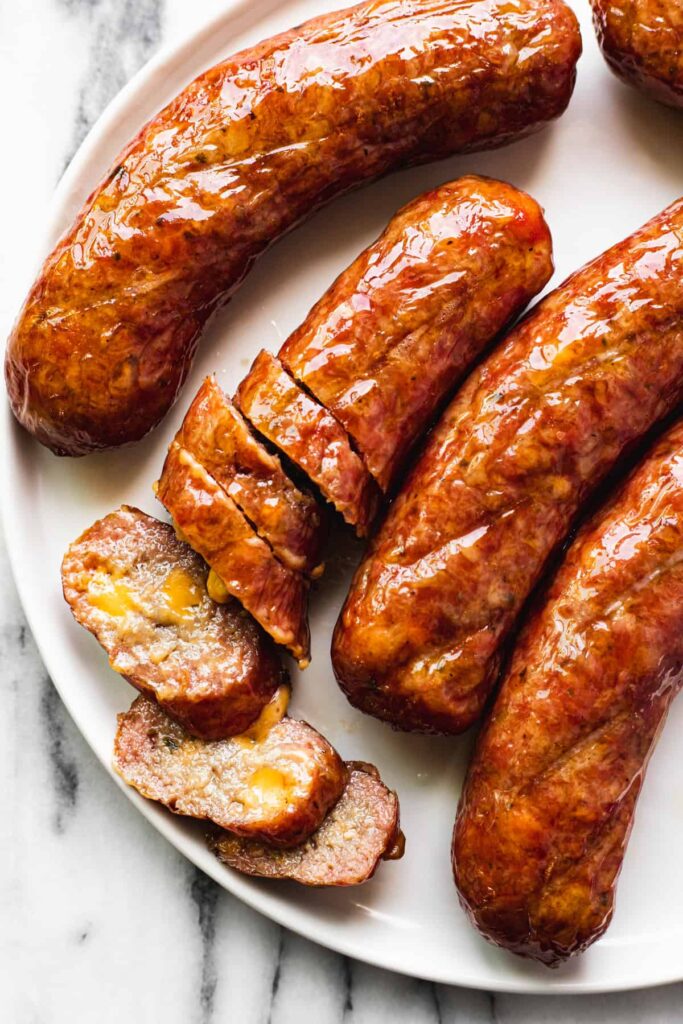
9) Smoked Sausage
Smoked sausage is a versatile ingredient that can elevate many dishes. It has a rich, smoky flavor that pairs well with a variety of foods.
You can use smoked sausage in soups, like a hearty smoked sausage and cheese potato soup. This soup offers a creamy, comforting meal perfect for cold days.
Pasta dishes benefit from smoked sausage too. A Cajun chicken and sausage Alfredo pasta mixes tender chicken with smoky sausage in a creamy sauce. The smoked sausage adds depth and a touch of spice to the dish.
For a low-carb option, consider a broccoli sausage cauliflower casserole. This dish is packed with vegetables and protein. Cheese ties everything together, making it an easy, all-in-one dinner.
Smoked sausage also works well on the grill. Cook it to an internal temperature of 165 degrees Fahrenheit. Serve on buns with your favorite toppings for a simple, delicious meal.
These are just a few ways to use smoked sausage in your cooking. It’s an ingredient that delivers big flavor with little effort, making it ideal for weeknight meals. Experiment with it in different recipes to find your favorites.
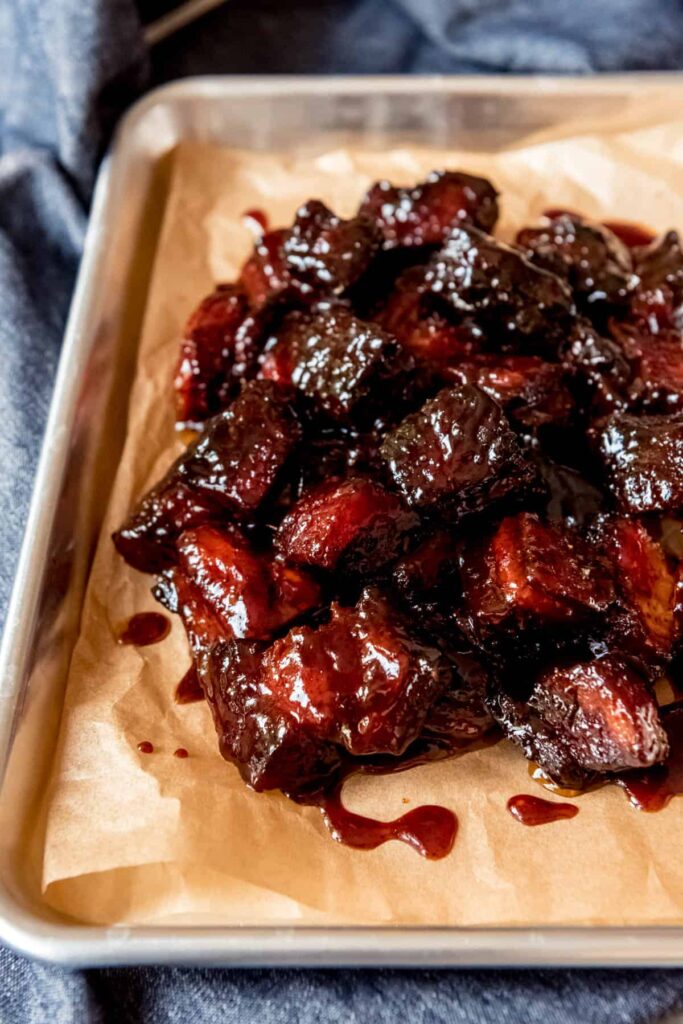
10) Smoked Pork Belly Burnt Ends
You start by cutting pork belly into 1-inch cubes. Season the cubes with your favorite BBQ rub. Let the rub sit for at least 15 minutes, or even overnight, for deeper flavor.
Set your smoker to 225-250 degrees Fahrenheit. Arrange the pork belly cubes on the grill, using a wire rack or directly on the grates. Smoke for 2-3 hours until a dark red bark forms.
Once the bark is to your liking, transfer the cubes to a disposable aluminum pan. Add butter, honey, and BBQ sauce to the pan, mixing well. Cover the pan with foil to keep the moisture in.
Increase the smoker temperature to 250 degrees Fahrenheit. Return the pan to the smoker and cook for another 1.5 to 2 hours. The internal temperature of the pork belly should reach 195-205 degrees Fahrenheit.
After cooking, let the pork belly burnt ends rest for about 15-20 minutes before serving. This helps the juices redistribute, making each bite flavorful and tender. Enjoy these sweet and savory morsels as a main dish or an appetizer.
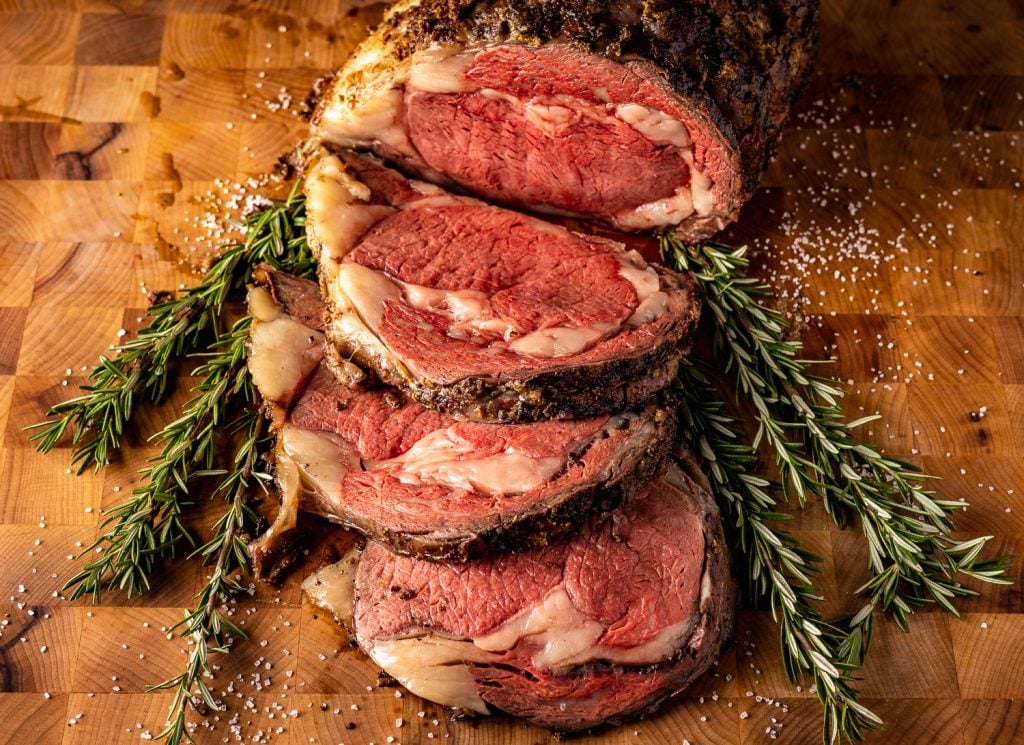
11) Smoked Prime Rib
Smoked prime rib is a delicious centerpiece for any meal. Begin by trimming any excess fat from your roast, leaving about 1/4 inch. Pat the roast dry with paper towels to help the seasoning stick better.
Season the roast with salt and pepper, or your favorite rub. Cover it evenly on all sides. For extra flavor, consider rubbing garlic butter over the meat.
Preheat your smoker to 225°F. Place the roast on the smoker grate. Cook until the internal temperature reaches 120°F for rare or 130°F for medium. Plan on about 35 minutes per pound of meat.
Once you reach the desired temperature, let the roast rest. Cover it with foil and let it sit for 20-30 minutes. This allows the juices to redistribute.
To finish, heat your smoker or a grill to 500°F. Sear the roast for about 15-20 minutes. This creates a nice crust on the outside. Remove from the smoker and let it rest briefly before slicing.
Serve your smoked prime rib with your favorite sides. The meat should be tender, juicy, and full of smoky flavor. Enjoy your meal!
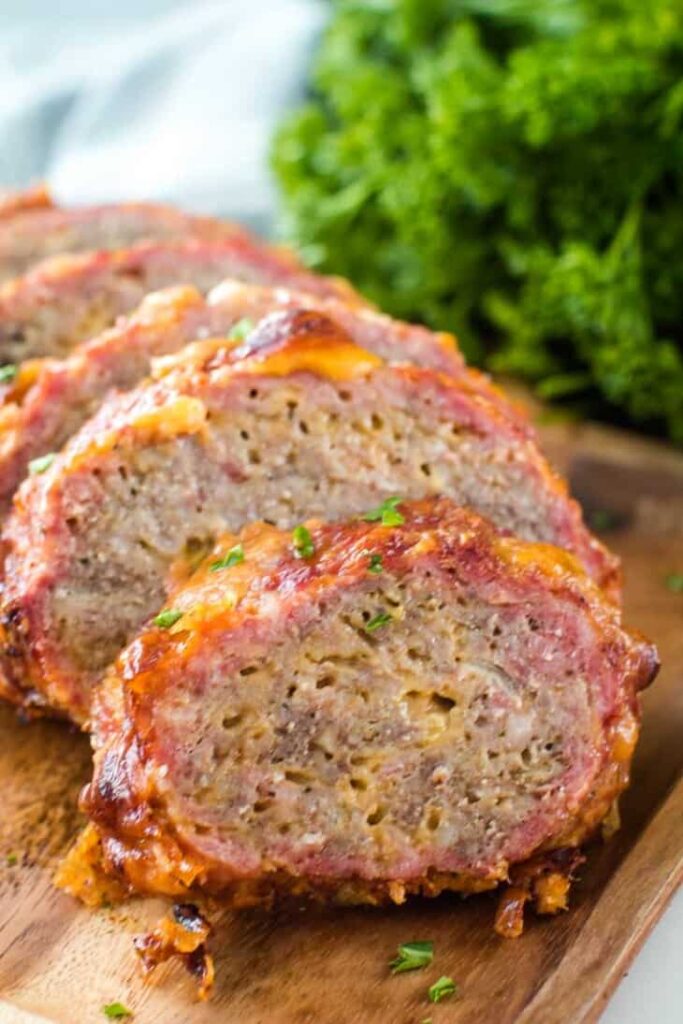
12) Smoked Meatloaf
Smoked meatloaf can be a crowd-pleaser at any gathering. Begin by preheating your smoker to 225°F. Mix ground beef, minced garlic, Worcestershire sauce, breadcrumbs, an egg, and BBQ rub in a large bowl. Once combined, shape the meat mixture into a loaf on a foil-lined baking sheet.
Place the meatloaf in the smoker. Let it smoke for about 2 hours. Meanwhile, prepare a glaze by mixing BBQ sauce with some mustard in a separate bowl. When the internal temperature of the meatloaf reaches 100°F, brush the glaze all over the meatloaf.
Increase the smoker’s heat to 350°F. Continue smoking until the internal temperature hits 160°F. This should take around another hour. Glaze the meatloaf every 30 minutes for a rich BBQ flavor. Once done, allow it to rest for 5 minutes before cutting and serving.
Smoked meatloaf offers a unique twist on a classic dish. The smoky flavor and tangy glaze make it an outstanding choice for your smoker recipes. Experiment with different wood chips and rubs to find your perfect flavor.
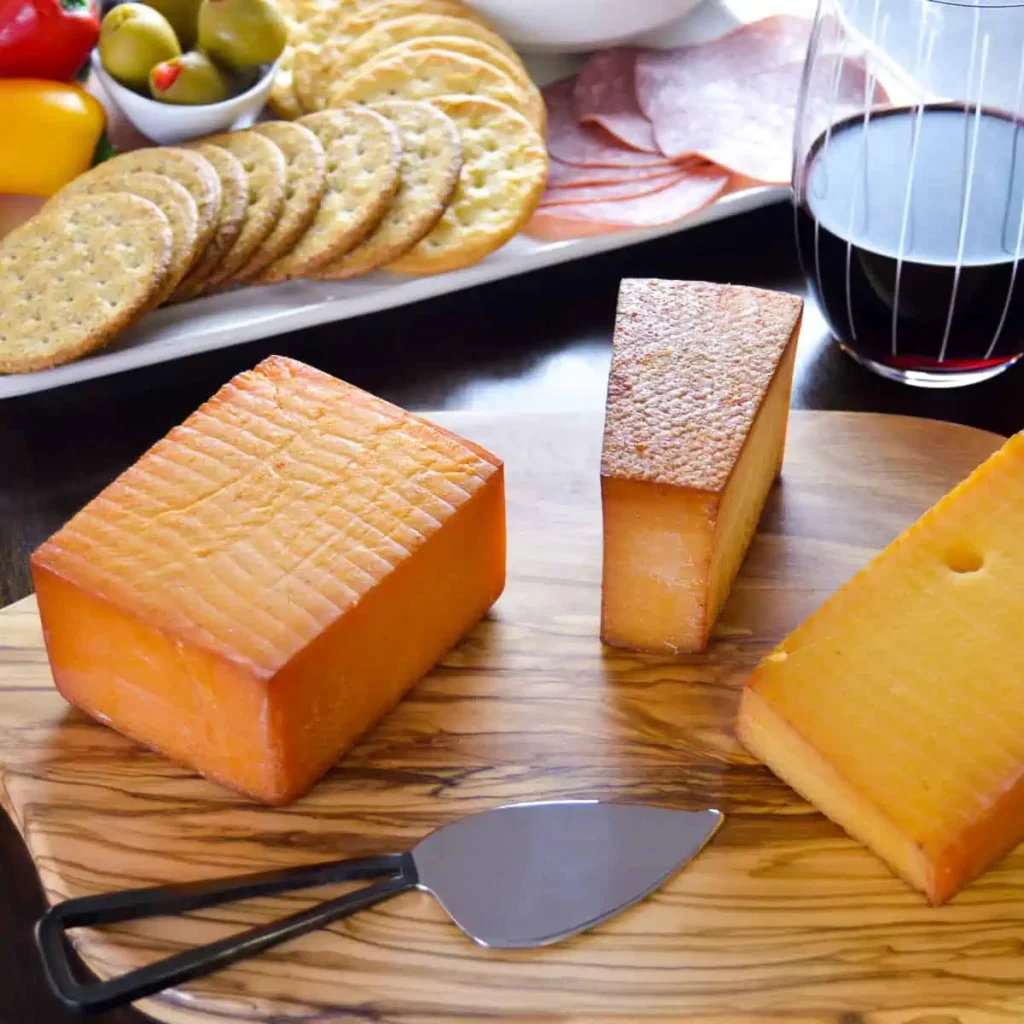
13) Smoked Cheese
Smoking cheese at home can add a delicious twist to your favorite cheeses. Start by preheating your smoker to between 75°F and 90°F. Use a tray of ice to help maintain these cool temperatures.
Place your cheese on a mesh wire rack or directly on the smoker rack. You can use cheddar, mozzarella, gouda, or even cream cheese.
Use wood chips like apple, hickory, or cherry for added flavors. Keep the smoker vent open while you smoke the cheese for about 1-4 hours, depending on how strong you want the smoke flavor.
After smoking, remove the cheese and wrap it in parchment paper or plastic wrap. Let the cheese rest in the refrigerator for at least a week to allow the flavors to meld. Some people prefer to wait for two weeks.
Proper storage is essential. Wrap the cheese well and store it in the refrigerator. Smoked cheese can last 6-8 weeks if stored correctly. Enjoy it in sandwiches, as a snack, or in your favorite recipes.
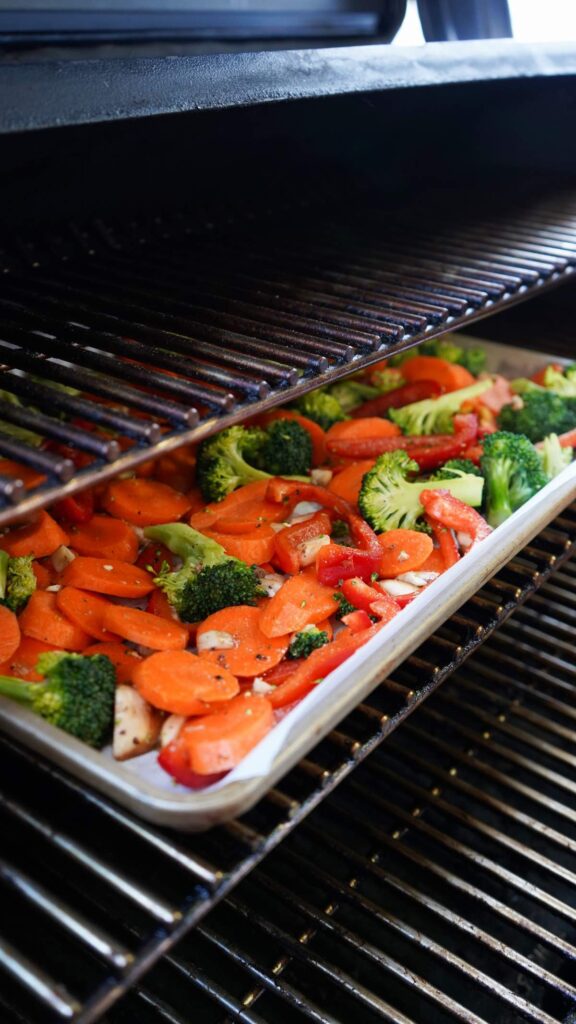
14) Smoked Vegetables
Smoking vegetables at your next barbecue can add deep, rich flavors. To start, use a vertical water smoker. Preheat it to 250°F (124°C). Add a mix of water and apple juice to the water pan for better flavor.
Choose a variety of vegetables like bell peppers, zucchini, and mushrooms. Cut them into bite-sized pieces. Place the vegetables in a bowl and toss them with olive oil, salt, and pepper.
For a pellet grill, preheat it to 375°F (190°C). Once heated, place the vegetables on the grill. Close the lid and cook for about 30-45 minutes, ensuring they are caramelized and cooked through.
Using a wood smoker? Add charcoal briquettes and chopped wood to the wood chip tray. Monitor the smoke and heat to maintain a steady temperature.
Consider adding a sprinkle of fresh parmesan cheese during the last few minutes of smoking. This adds an extra layer of flavor.
Rotate or stir the vegetables halfway through the cooking process. This helps to get an even cook and enhance their flavors.
Smoked vegetables make a tasty and healthy barbecue addition!
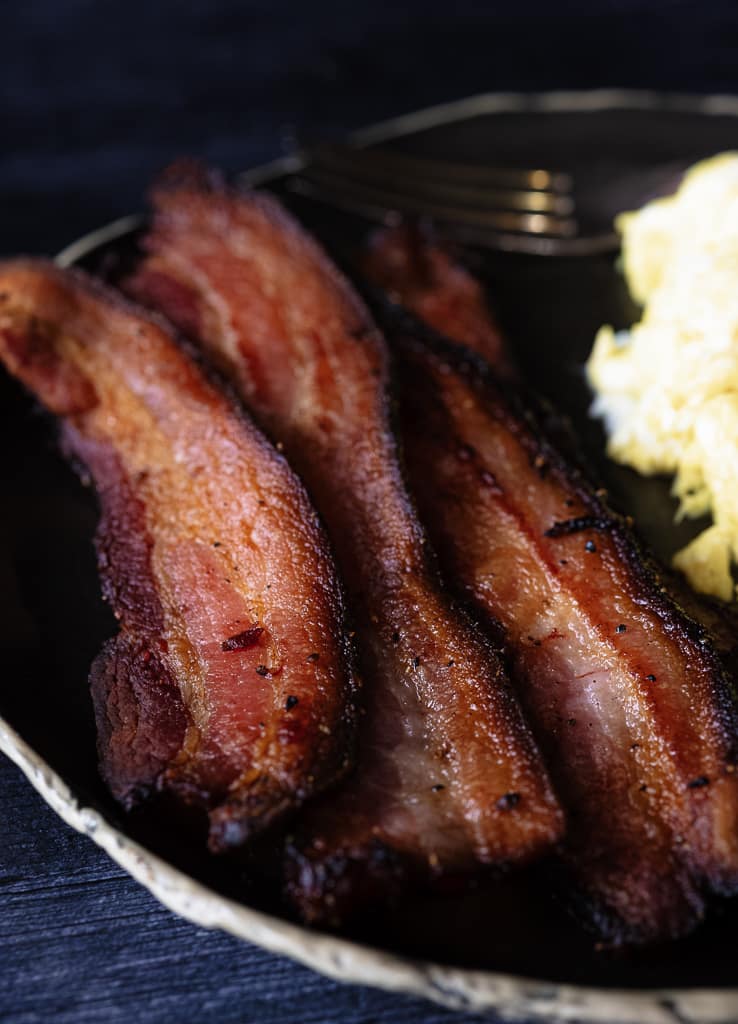
15) Smoked Bacon
Smoked bacon is a delicious treat that you can make at home with a few basic steps. Start by choosing your bacon cut. Pork belly works best because of its rich flavor and texture.
Preheat your smoker. For the best results, aim to keep the smoker at around 160-170 degrees Fahrenheit. Apple, maple, and hickory woods add great flavors to bacon.
Place your pork belly directly on the smoker grates. Close the lid and let it smoke for approximately 6 hours. Make sure the internal temperature reaches 155 degrees Fahrenheit.
If you’re using a pellet grill, you can smoke bacon strips as well. Preheat the grill to 275 degrees Fahrenheit with the smoke setting on high. Lay the bacon strips directly on the grates and smoke for 30-35 minutes until they are crispy.
After smoking, let the bacon cool for a few minutes before serving. This allows the flavors to settle and makes it easier to handle. Smoked bacon adds a deep, smoky flavor to breakfast dishes, sandwiches, and more.
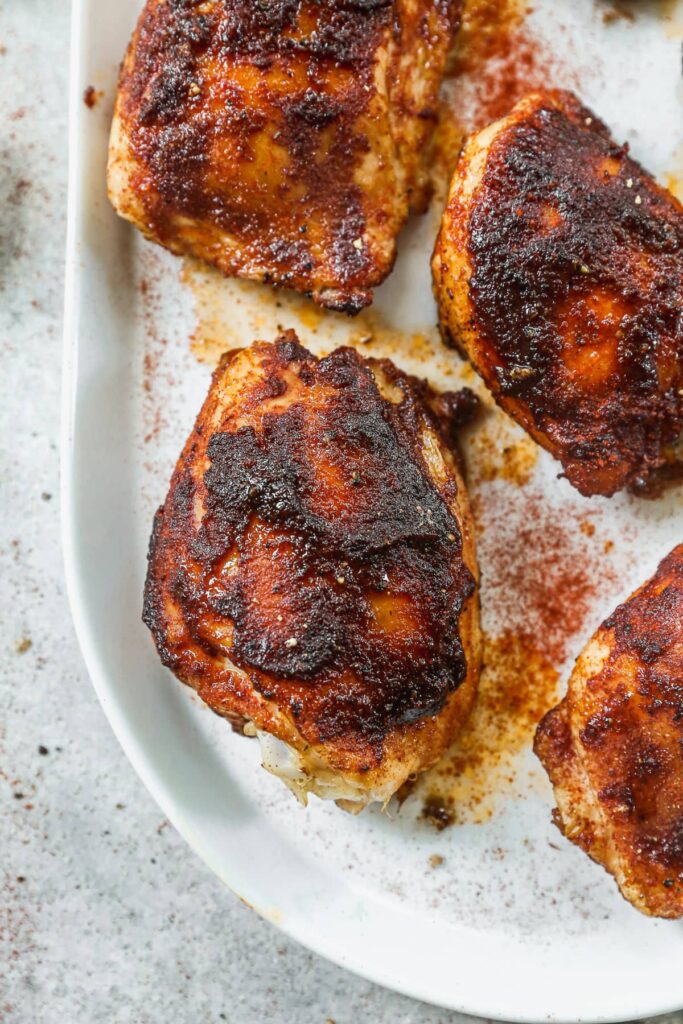
16) Smoked Chicken Thighs
Smoked chicken thighs are a delicious and easy dish for any BBQ enthusiast. Start by preheating your smoker to 250°F. Adding hickory, apple, or cherry wood enhances the flavor.
Rub the chicken thighs with a mix of your favorite spices. Be sure to coat both sides and under the skin. Use a bit of olive oil to help the seasoning stick.
Place the chicken thighs in the smoker, skin-side up. Let them smoke for about 1 hour and 30 minutes, until the internal temperature reaches 170-175°F.
For extra crispy skin, you can increase the smoker temperature to 375°F after the first 30 minutes. This helps render the fat and crisps up the skin.
When the thighs are done, remove them from the smoker and let them rest for 5-10 minutes. Serve hot, with extra BBQ sauce if desired. Enjoy the smoky, juicy flavors.
Make sure you have plenty of napkins!
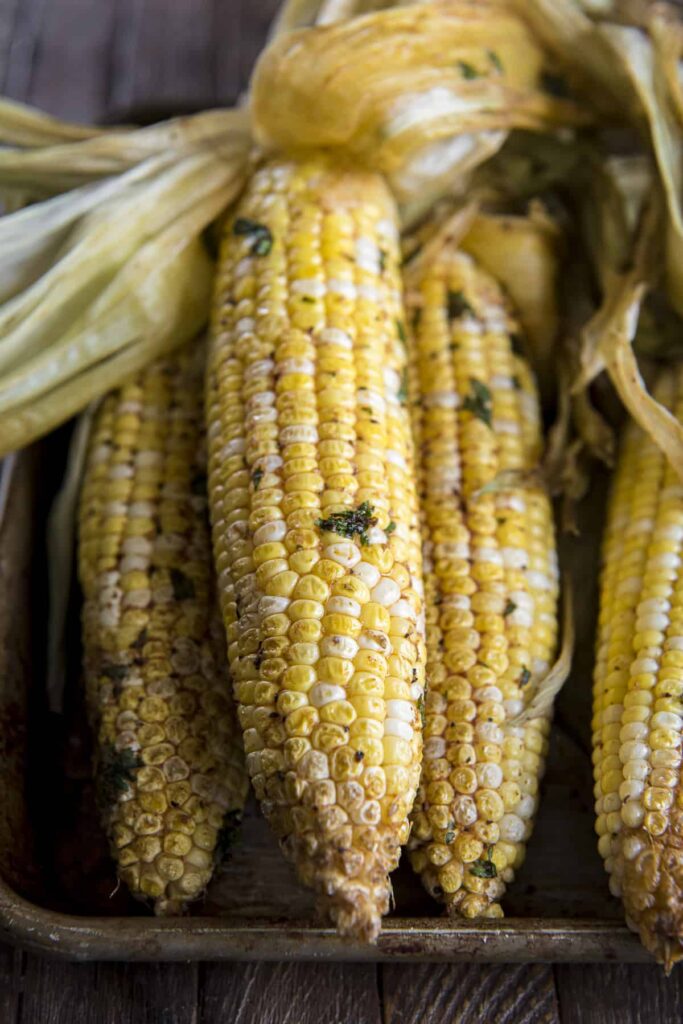
17) Smoked Corn on the Cob
Smoked corn on the cob is a tasty side dish you can make on your smoker. Start by preheating your smoker to 225 degrees Fahrenheit.
Next, melt some butter in a small bowl and mix in your favorite seasonings. Common choices include salt, pepper, garlic powder, or even a sweet rub.
Peel back the husks on the corn but don’t remove them entirely. Brush all sides of the corn with the seasoned butter mixture. Then, pull the husks back up to cover the corn.
Place the corn directly on the smoker grates and close the lid. Smoke the corn for about 90 minutes if you’d like a deep, smoky flavor. If you prefer a shorter cook time, around 25 to 45 minutes can still give you great results.
Flip the corn occasionally to ensure even smoking. Once done, let the corn cool slightly before serving. The result is a delicious, smoky treat that’s perfect for any barbecue.
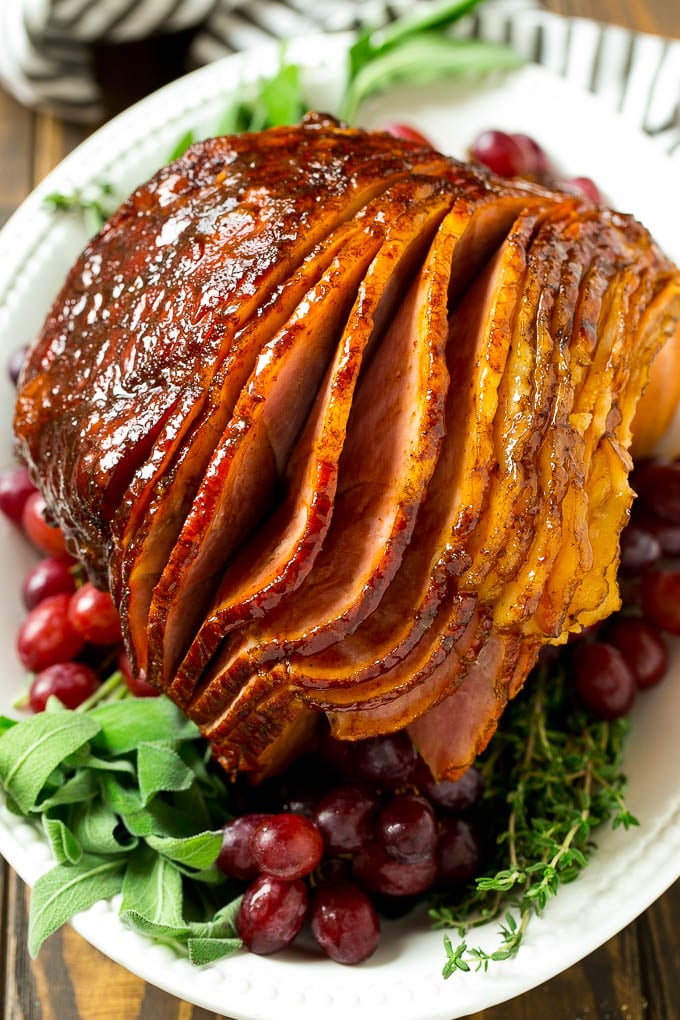
18) Smoked Ham
Smoking ham brings out deep, rich flavors. Start by selecting a fully-cooked ham. Preheat your smoker to 225-250°F.
Place the ham, cut side down, directly on the grill grates. Insert a digital thermometer into the thickest part of the ham for accurate temperature tracking.
For the glaze, mix ingredients like brown sugar, honey, or maple syrup. Apply the glaze during the last hour of smoking for a sweet, caramelized finish.
Keep the smoker vent open to ensure proper airflow. Smoke the ham until it reaches an internal temperature of 130°F. If using a glaze, then make sure it sticks without burning.
Once done, allow the ham to rest for at least 15-30 minutes before carving. This resting period helps retain the juices, making the meat more flavorful and tender.
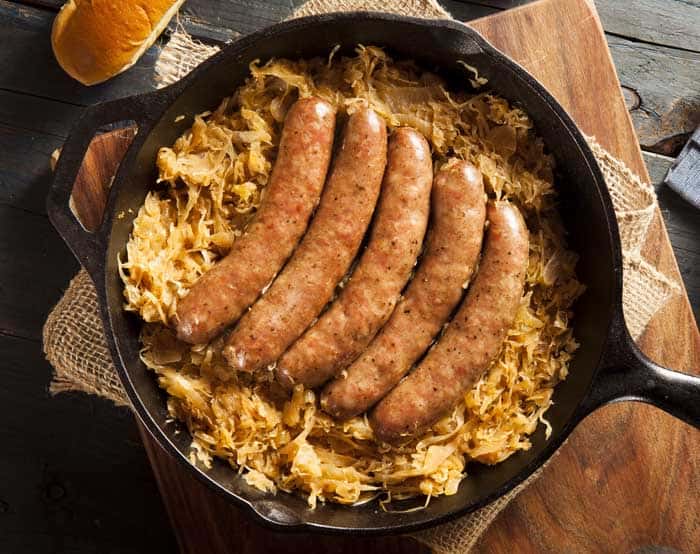
19) Smoked Bratwurst
Smoking bratwurst adds a rich, smoky flavor that takes these sausages to the next level. Start by preheating your smoker to 225°F. You can use wood chunks or chips like cherry or apple for a subtle sweetness.
Place the brats inside the smoker. Let them cook for about 1 hour and 45 minutes, or until they reach an internal temperature of 160°F. Use a meat thermometer to check this.
Some recipes suggest a different method. For a quicker cook time, set your smoker to High Smoke Mode or 225°F. Add the bratwurst and smoke for 30 minutes. Then turn the temperature up to 275°F, flip the sausages, and smoke for another 30 minutes.
If you prefer a higher cooking temp, set your smoker to 300°F. Dry off any beer from pre-soaking and lightly coat the brats with olive oil. Insert your temperature probe into the thickest brat.
Serve the smoked brats on buns with your favorite toppings. Onions or sauerkraut are classic choices. You can even toast the buns on the smoker for an added touch. Enjoy your smoky, flavorful bratwurst fresh from the grill!
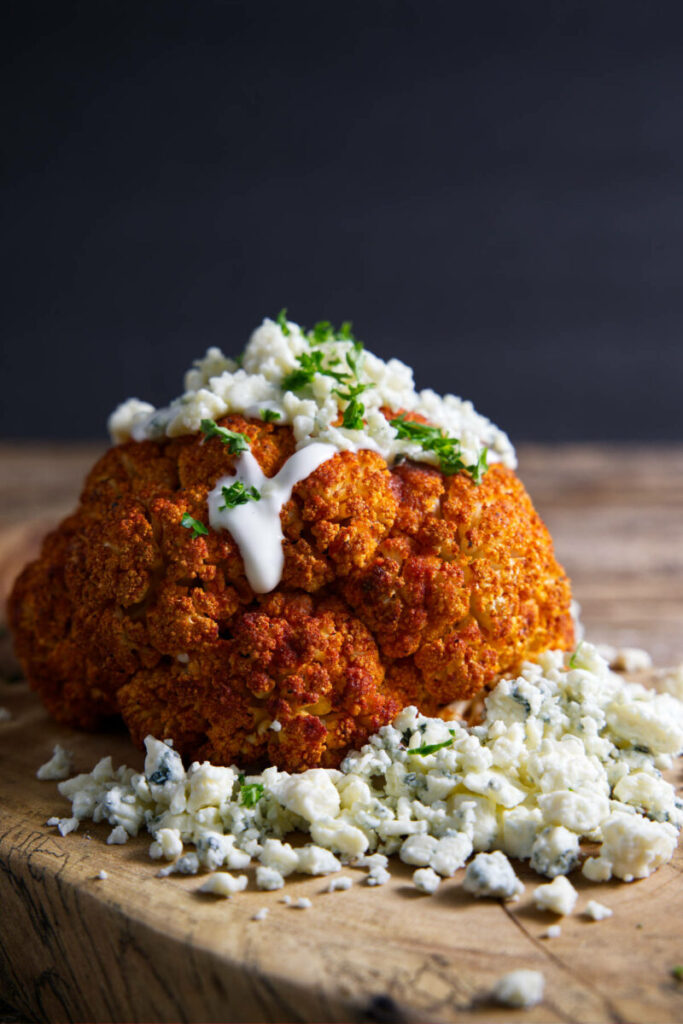
20) Smoked Cauliflower
Smoked cauliflower is a delicious and healthy addition to your smoker recipes. Start by preheating your smoker to about 225°F-250°F. Remove the stem from the bottom of the cauliflower and rinse it thoroughly. Pat it dry with paper towels.
Brush the cauliflower with olive oil and apply your favorite BBQ rub. Place the cauliflower directly on the smoker grates, keeping it away from the heat source. Close the lid.
Smoke the cauliflower for about 2-3 hours until it is fork tender. During smoking, try not to open the lid too often to maintain a steady temperature. Different types of wood like apple, cherry, or hickory work well for adding extra flavor.
If you prefer, you can pre-cook the cauliflower briefly. Microwave for 2 minutes, or boil for 5 minutes. This step helps to ensure tenderness.
Once smoked, you can serve the cauliflower as a side dish or even a main course. Its smoky flavor pairs well with grilled meats, salads, or other vegetables.
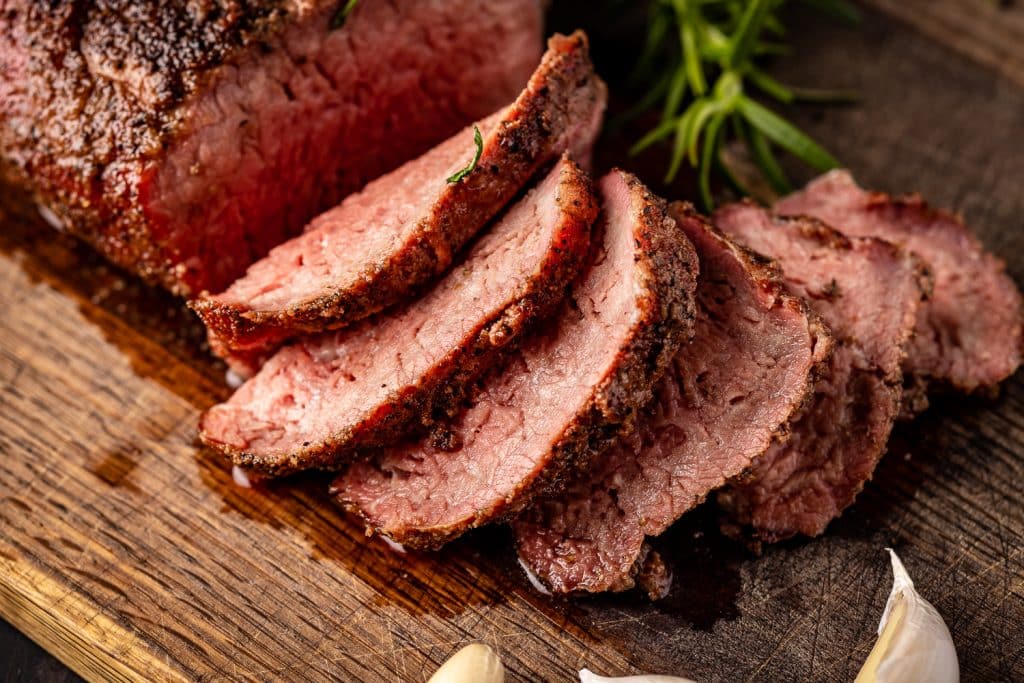
21) Smoked Tri-Tip
Smoking tri-tip gives it a rich, smoky flavor and keeps it juicy. Start by seasoning the meat. Use coarse kosher salt at about 1/2 teaspoon per pound. Rub the tri-tip with oil, then apply your favorite rub generously on both sides.
Place the tri-tip in the smoker at a low temperature. Keep it away from direct heat. Let it smoke until the internal temperature hits 110 degrees Fahrenheit. This usually takes 30 to 40 minutes, depending on the size.
After smoking, sear the tri-tip in a hot cast iron skillet with some butter and rosemary. Sear for 2-3 minutes per side. This step adds a nice crust and extra flavor to the meat.
Let the tri-tip rest for 15 minutes before you slice it. Slice against the grain to keep it tender. Serve with the jus from the meat for added moisture and flavor. Enjoy your smoked tri-tip with your favorite sides.
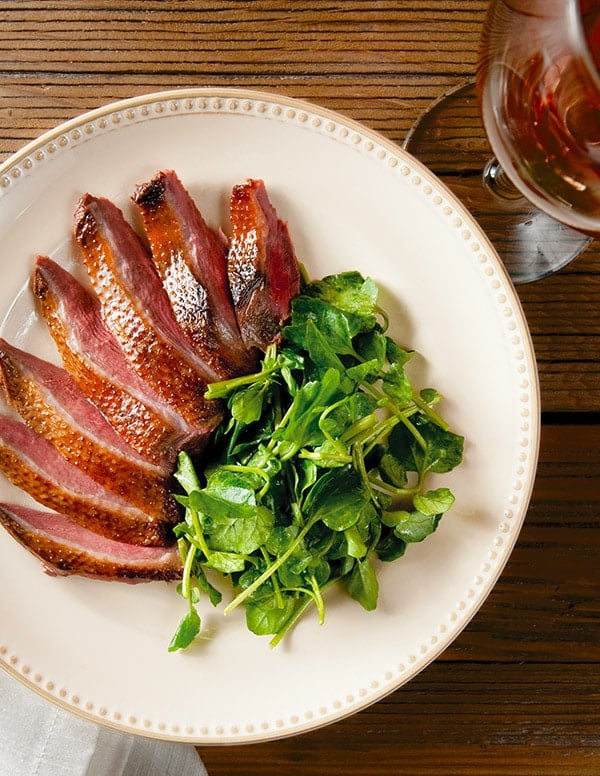
22) Smoked Duck
Smoking duck can be a tasty and rewarding process. Start by patting the duck skin dry to help it achieve a good, crispy texture.
Fill the cavity with orange halves for added flavor. Once your smoker reaches 225°F, place the duck directly on the grates, breast side down. This position allows the fat to render properly.
Use apple, pecan, or cherry wood for the best smoke flavor. Aim to smoke the duck for about 2 to 4 hours, depending on the size. Check for an internal temperature of 160°F to ensure it’s fully cooked.
Baste the duck every hour with a mixture of butter and your favorite rub or with maple syrup. When done, let it cool slightly before carving. Serve warm or at room temperature for the best experience.
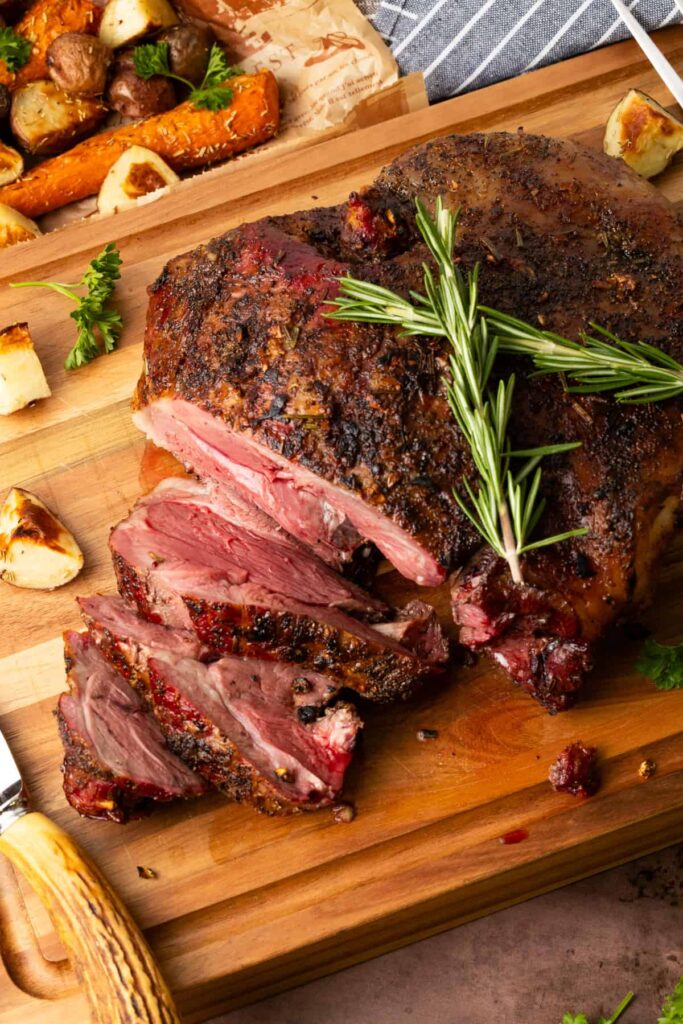
23) Smoked Leg of Lamb
Smoking a leg of lamb is a flavorful way to prepare this tender cut of meat. Start by marinating the lamb for up to 24 hours in your favorite mixture. This might include ingredients like olive oil, lemon juice, garlic, and herbs. The marinade helps to enhance the natural flavors of the lamb.
Preheat your smoker to 225°F. If you are using a Traeger or any pellet grill, ensure it is set up correctly and the grates are clean. Place the leg of lamb directly onto the grill grates with the fat side up. This allows the fat to render down, keeping the meat juicy.
You can add a pan of water to the smoker to help maintain moisture. Close the lid and let the lamb smoke undisturbed. Check the internal temperature after 2 hours. For medium-rare, aim for an internal temperature of about 145°F. If you prefer it medium, go for about 160°F.
Season the lamb with a rub of your choice before smoking. This can be a simple mix of salt, pepper, and rosemary. The slow-smoking process will infuse a rich, smoky flavor into the meat, making it tender and delicious.
Once the lamb reaches your desired temperature, remove it from the smoker and let it rest for at least 15 minutes. Slice thinly against the grain and serve.
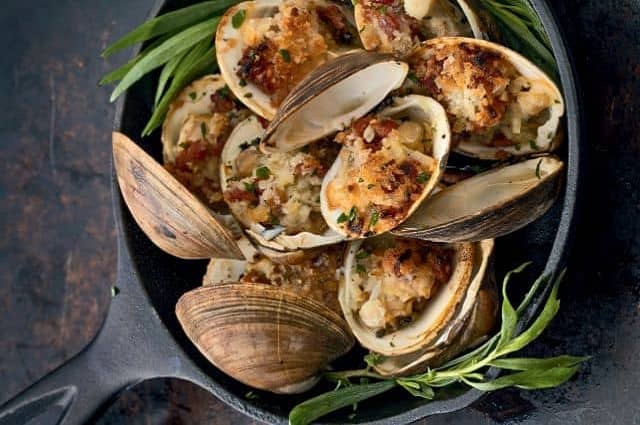
24) Smoked Clams
Smoking clams can elevate their natural taste with a savory, rich flavor. Begin by preheating your smoker to 275°F. Place clean clams on the smoker grate, and smoke them for about 30 minutes. The clams are done when they pop open.
While the clams are smoking, you can prepare a tasty sauce. Melt butter and olive oil in a saucepot over medium-high heat. Add minced garlic, shallots, and red bell pepper. Cook until the vegetables soften, around 2 minutes.
Next, stir in white wine and lemon juice. Let the mixture come to a boil to enhance the flavors. For a more complex taste, you can also add minced dill or ground chorizo to the sauce.
Once smoked, discard any clams that do not open. Pour the prepared sauce over the clams. The combination of smoky clams and the rich, buttery sauce creates a delectable seafood dish.
This simple yet delicious recipe can impress any seafood lover. Give it a try at your next gathering, and enjoy the unique flavors of smoked clams.
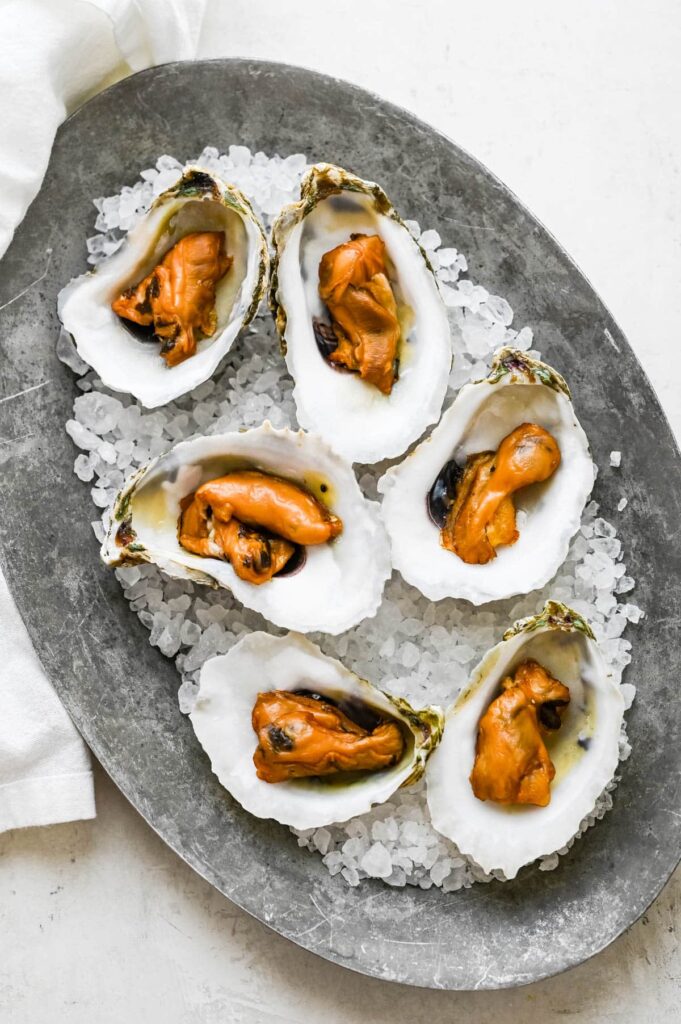
25) Smoked Oysters
Smoking oysters can be a delightful way to enhance their rich flavor. Start by shucking the oysters. Make sure you save as much of the natural liquid as possible.
Arrange the oysters back in their shells and place them on a wire rack. Preheat your smoker to 225°F. Once it’s ready and producing clean smoke, put the oysters inside.
Let the oysters smoke for about 30-45 minutes until they become firm and reach your desired texture. To achieve a more intense flavor, you can add a bit of melted butter, lemon juice, or your favorite spices.
Smoked oysters are great for appetizers, snacks, and even as toppings for salads and pasta. You can serve them on crackers with a splash of hot sauce or mix them into dips and sauces for a delicious twist.
Enjoy your smoked oysters immediately after smoking for the best taste.
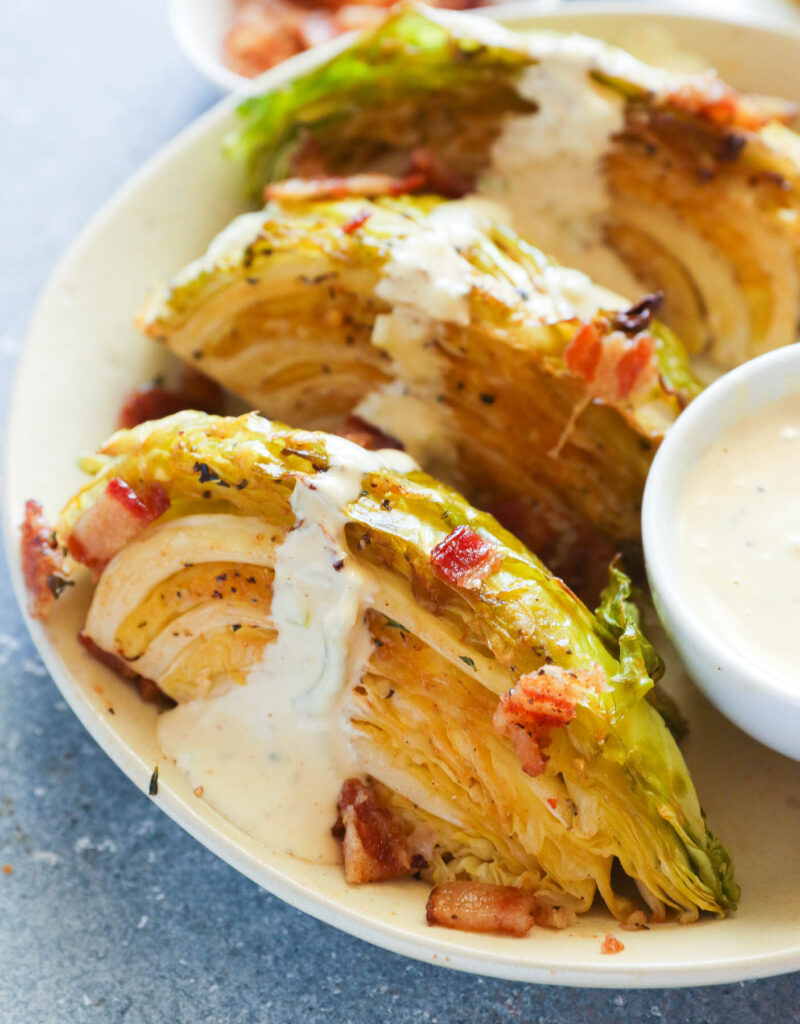
26) Smoked Cabbage
Smoked cabbage is a simple and tasty addition to your smoker recipes. Start by removing the outer leaves and slicing the cabbage into thick 1-inch slices or wedges.
Prepare a seasoning mix with ingredients like garlic powder, onion powder, and salt. Rub the mix onto the cabbage slices.
Place the seasoned cabbage on your smoker. Keep the temperature around 225°F to 230°F.
After about 1 hour, check the cabbage for tenderness. If it’s not tender, leave it on the smoker for a bit longer.
For extra flavor, you can wrap the cabbage slices in bacon or drizzle them with melted butter before smoking. This adds a rich, savory taste.
Once the cabbage is tender, remove it from the smoker. Let it cool slightly before serving.
Enjoy the smoky, flavorful cabbage as a side dish or even as a main course with your favorite grilled meats.
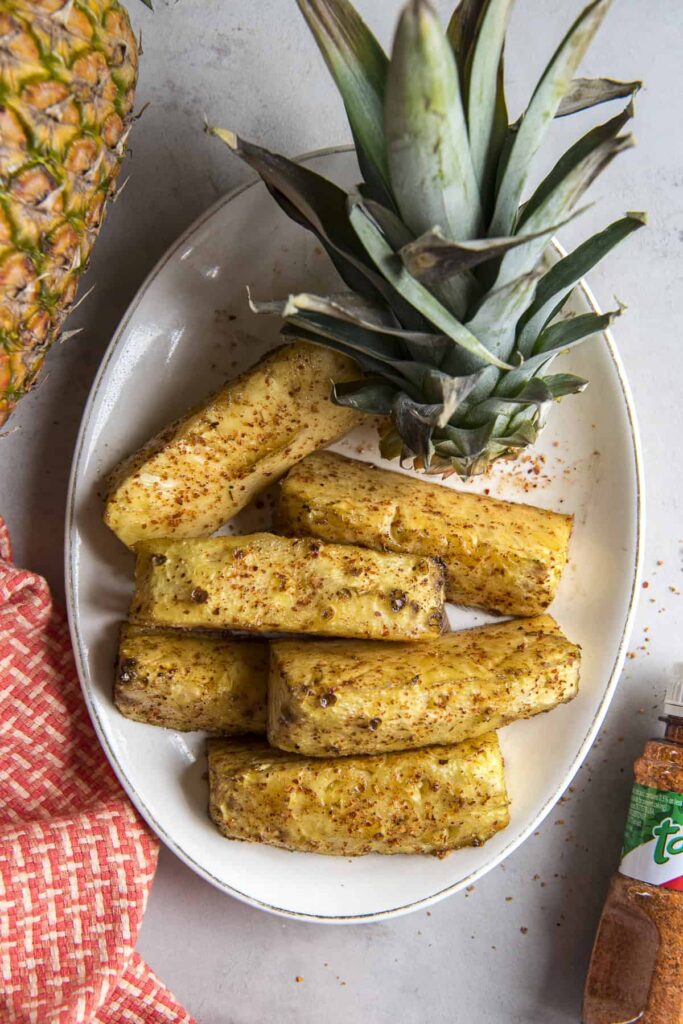
27) Smoked Pineapple
Smoked pineapple is a sweet and smoky treat that adds a new twist to a classic fruit. Start by preparing your pineapple. Slice off the top, bottom, and skin of the pineapple. Cut it lengthwise into quarters and remove the core.
Next, season the pineapple. You can use a brown sugar rub or your favorite barbecue glaze. Brush the pineapple chunks lightly with the glaze, and then sprinkle them with the brown sugar rub.
Preheat your smoker to about 225°F. If using a pellet grill, set it to the same temperature. Place the pineapple directly on the grill grates or in a foil boat if you prefer easier cleanup.
Smoke the pineapple for around 45-60 minutes. You can smoke a whole pineapple for an hour, halved pineapple pieces for 30 minutes on each side, or pineapple slices for about 45 minutes.
Once done, the pineapple will be infused with a unique smoky flavor. It’s a versatile dish that goes well with many sides, from savory to sweet. Try it as a dessert served with ice cream or as a side dish at your next BBQ.
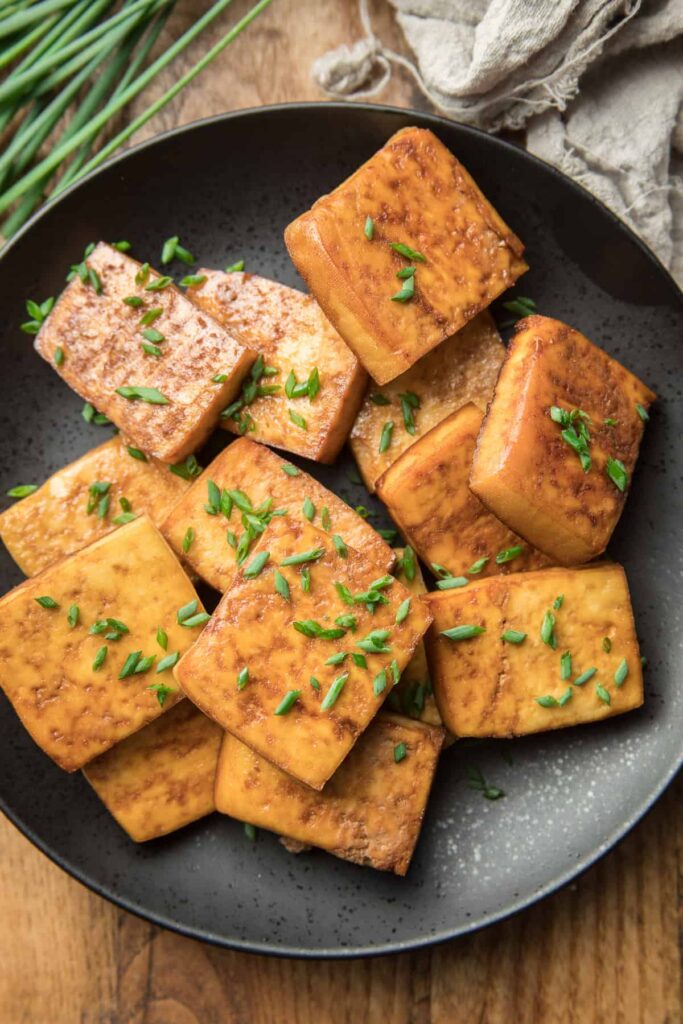
28) Smoked Tofu
Smoking tofu can transform its texture and flavor. Extra-firm or firm tofu works best for smoking. Its dense structure holds up well and absorbs flavors from marinades and smoke.
Start by pressing the tofu to remove excess moisture. Marinate it for several hours in your favorite blend of spices, soy sauce, and a touch of sweetener. This step infuses the tofu with rich flavor.
Preheat your smoker to about 190-225°F (88-107°C). Use wood chips like hickory or applewood for a nice, smoky aroma. Place the marinated tofu on the smoker rack, leaving some space between pieces.
Smoke the tofu for 20-25 minutes. Keep the smoker’s temperature stable, ensuring consistent smoke and heat. Check occasionally to avoid overheating.
After smoking, let the tofu cool slightly. It’s now ready to be used in salads, sandwiches, or eaten as a savory snack. Smoked tofu adds a deliciously unique twist to any dish, providing both flavor and protein.
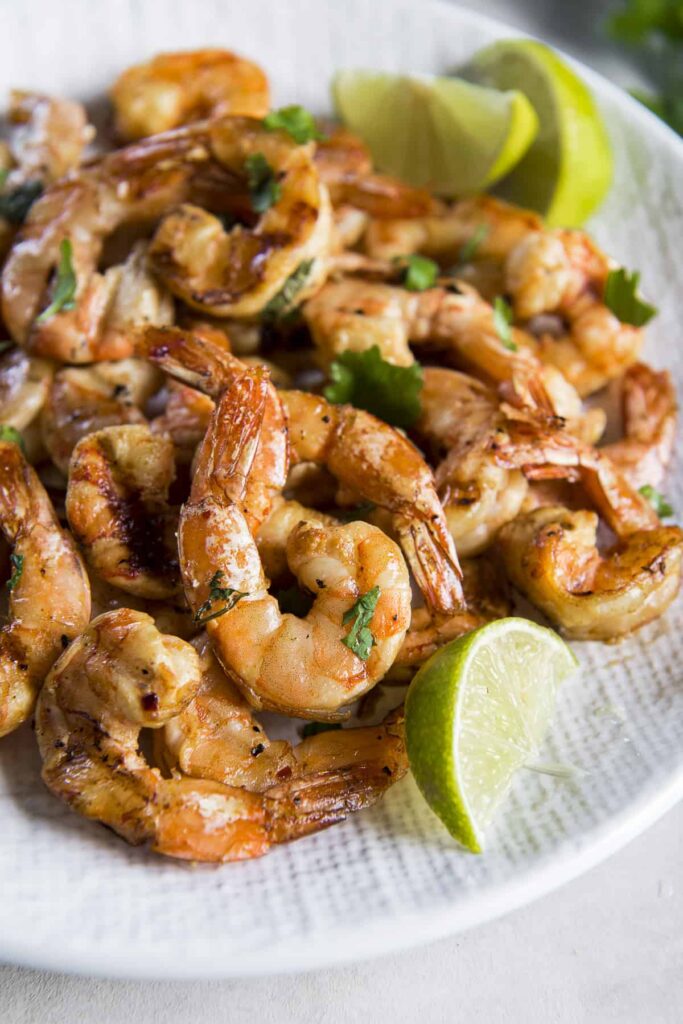
29) Smoked Shrimp
Smoked shrimp is a tasty treat that’s surprisingly easy to make. Start by preheating your smoker to 225 degrees Fahrenheit. While the smoker heats up, prepare your shrimp. Make sure they are peeled and deveined for the best result.
Toss the shrimp in olive oil and a simple spice mix. Common spices include garlic, paprika, salt, and pepper. Mix well to ensure all shrimp are coated evenly.
Place your shrimp on the smoker racks or on aluminum foil to prevent them from falling through the grates. Smoke the shrimp for about 25-35 minutes, or until they are pink and cooked through.
For added flavor, consider a garlic butter sauce. Melt butter and stir in garlic, lemon peel, red pepper flakes, and black pepper. Drizzle this mixture over the shrimp before or after smoking.
When done, remove the shrimp from the smoker and serve immediately. Smoked shrimp pairs well with a variety of sides and makes for a great appetizer or main course. Enjoy the rich, smoky flavor in every bite.

30) Smoked Potatoes
Smoked potatoes are a delicious side dish that will complement any meal.
First, preheat your smoker to 225°F.
Choose small to medium-sized potatoes, and wash them well.
Drizzle them with olive oil and season with salt and pepper.
You can also add herbs like rosemary or garlic for extra flavor.
Place the potatoes on the smoker grates or in a foil pan.
Keep the lid closed and let them smoke for about 1.5 to 2 hours.
Stir the potatoes occasionally if they are in a pan, to ensure even cooking.
The target internal temperature for the potatoes should be around 205-210°F.
Once they are fork-tender, they are ready to be served.
Optional: You can add a dollop of butter on top of each potato after they are done smoking.
Serve your smoked potatoes warm, and enjoy their smoky flavor and soft texture.
This simple but tasty dish will be a hit at any gathering.
The Basics of Smoking
Smoking is a method of cooking that infuses food with rich, smoky flavors. To master smoking, you need to understand the types of smokers, essential tools, and the best woods for smoking.
Understanding Different Types of Smokers
There are several types of smokers: charcoal, electric, gas, and pellet.
- Charcoal smokers use charcoal as the main fuel source. They give a unique, smoky flavor but need constant attention to maintain temperature.
- Electric smokers are operated by electricity and are easy to use. They are great for beginners but might lack some of the depth of flavor offered by other types.
- Gas smokers use propane or natural gas. They are convenient and offer a consistent heat source.
- Pellet smokers use compressed wood pellets. They provide an excellent smoky flavor and are quite easy to control, though they can be more expensive.
Essential Tools and Accessories
To get the best smoking results, you’ll need a few essential tools and accessories.
- A meat thermometer is vital for checking internal temperatures.
- Heat-resistant gloves protect your hands when handling hot grates or coals.
- A chimney starter is essential for lighting charcoal quickly and evenly.
- Wood chips or chunks are needed for adding smoke flavor.
- Water pans help maintain moisture in the smoker.
- Smoker box can be useful if you’re using a gas grill to smoke food.
Investing in these accessories makes smoking easier and ensures better results.
Choosing the Right Wood for Smoking
Choosing the right wood is crucial for adding the perfect flavor to your food.
- Hickory: Strong and hearty, ideal for pork and ribs.
- Mesquite: Stronger than hickory. Best for beef and works well for shorter cooks.
- Apple: Light and fruity, excellent for poultry and pork.
- Cherry: Sweet and mild, pairs well with most meats.
- Oak: Versatile and balanced, great for beef and pork.
Using the right wood can make a big difference in the flavor of your food. Matching wood type to meat type enhances the overall taste experience.
Tips for Perfect Smoking
To achieve the best smoked meats, focus on managing temperature and smoke, preparing your meat properly, and mastering beginner-friendly smoking techniques.
Managing Temperature and Smoke Levels
Controlling the temperature is crucial for perfect smoking. You should aim to keep your smoker at a consistent temperature, typically around 225 to 250 degrees Fahrenheit. Using a thermometer to monitor the internal temperature ensures accuracy.
The type of wood you choose affects the flavor. Fruit woods like apple or cherry provide a sweet, mild taste, while hardwoods like hickory or oak give a stronger, smokier flavor.
Keep the smoke thin and blue, not thick and white. Thick smoke can make the meat taste bitter. Adjusting the air vents helps control smoke levels. Open vents for more oxygen and a hotter fire, close them to reduce heat.
Preparing Your Meat for Smoking
Properly preparing your meat enhances the smoky flavor. Start by trimming excess fat, leaving a slight layer to keep the meat moist. Apply a rub or marinade to add flavor. Rubs often include salt, pepper, and other spices, while marinades combine liquids and seasonings.
Let your meat sit at room temperature before smoking. This helps it cook evenly. For larger cuts, inject marinades to penetrate deeper layers.
If smoking brisket, trim the fat cap to about ¼ inch thick. For pork shoulder, remove the skin for better smoke absorption. All meat should be patted dry to promote a good bark.
Smoking Techniques for Beginners
Beginner smokers should start with easier meats like chicken or pork ribs. These cuts are more forgiving if temperatures fluctuate. Always use indirect heat to avoid burning the meat.
Maintain consistent temperature by adding fuel and wood chips gradually. Avoid opening the smoker too often, as this lets out precious heat and smoke.
Investing in a remote thermometer allows you to monitor the meat’s internal temperature without opening the smoker. Aim for internal temperatures like 165°F for chicken and 203°F for brisket.
Trying the 3-2-1 method for ribs can yield great results: smoke for 3 hours, wrap in foil for 2 hours, then unwrapped for the last hour to develop a crust.
Advanced Smoking Techniques
In this section, you will learn about the differences between cold and hot smoking, how to enhance flavors with marinades and rubs, and tips for achieving the perfect smoke ring on your meats.
Cold Smoking vs. Hot Smoking
Cold smoking and hot smoking are two essential techniques for smoking meat. Cold smoking is done at temperatures below 90°F (32°C) and is primarily used for flavoring foods rather than cooking them. It typically requires extended smoking times and is ideal for items like cheese, fish, and cured meats.
Hot smoking, on the other hand, cooks the food while smoking it at temperatures between 200°F (93°C) and 300°F (149°C). This method is perfect for items like brisket, ribs, and pork shoulder. It imparts a strong smoky flavor and creates tender, fully cooked meats.
Infusing Flavor with Marinades and Rubs
Marinades and rubs are crucial for enhancing the taste of smoked meats. Marinades are liquid mixtures usually containing an acid (like vinegar or citrus juice), oil, herbs, and spices. They penetrate the meat, infusing it with flavors and tenderizing it. To achieve the best results, marinate meats for several hours or overnight in the refrigerator.
Rubs are dry mixtures of spices and herbs rubbed directly onto the meat’s surface. They create a flavorful crust, also known as bark, when smoked. Common ingredients for rubs include paprika, brown sugar, garlic powder, and black pepper. Both methods can be used together for a deeper flavor profile.
Achieving the Perfect Smoke Ring
The smoke ring is a pink layer just beneath the surface of smoked meats and is considered a hallmark of great barbecue. To achieve a perfect smoke ring, you need proper temperature control and the right kind of wood.
Maintain temperatures between 225°F (107°C) and 250°F (121°C) and use woods rich in nitrogen dioxide, like hickory or oak. Moisture also plays a role. Keep a water pan in the smoker to maintain humidity. These techniques help in the formation of the smoke ring and ensure that the meat has a tender, smoky flavor.
